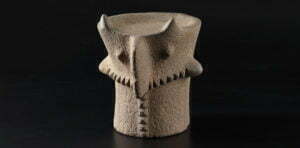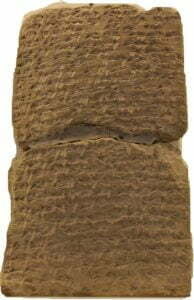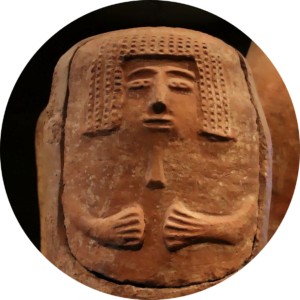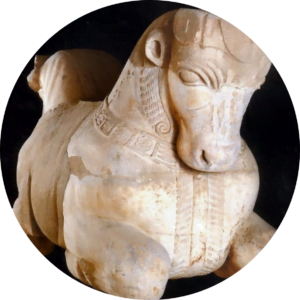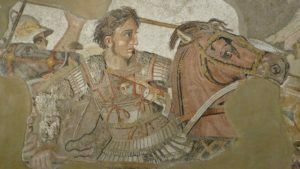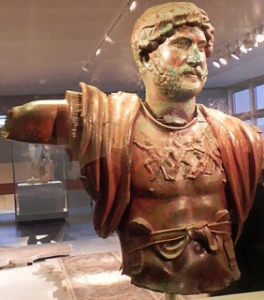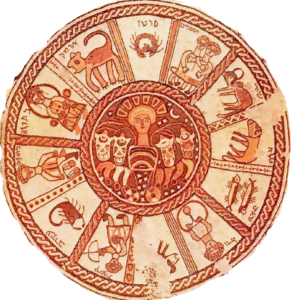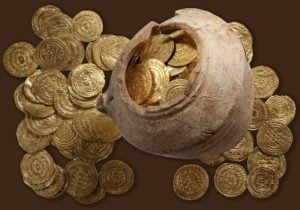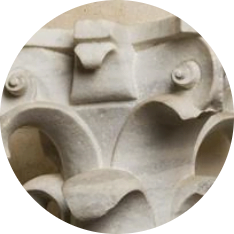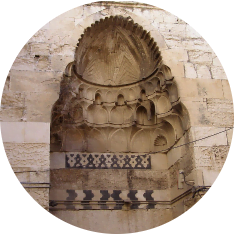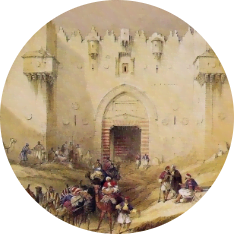Chronological Framework, Subdivision, and Outline of the Period
The Transition between the End of the Bronze Age and the Iron Age
Towards the end of the Late Bronze Age there was a severe crisis in the political, social and economic structure of the ancient Near East and the Aegean world. During the Late Bronze Age, and especially during the 13th century BCE, a balance was created between the powers that controlled large geographical areas. The Egyptian Empire and the Hittite Empire constituted the two important centers of power in the Near East, while in the Aegean world, the Mycenaean culture, divided between a number of political units, was in contact with the East. Within this array of forces, the city states of Canaan, despite being under Egyptian rule, managed to maintain their uniqueness and even autonomous rule given to them by the supreme Egyptian government. This situation came to an end gradually, during the 13th century until the middle of the 12th century. Within a short period of time in the late 13th century the Hittite Empire collapsed, the centers of Mycenaean “palace culture” were destroyed and the international trading system, which characterized the Late Bronze Age, collapsed. Egypt continued to control its province in Canaan until the middle of the 12th century, but this too ceased to exist after the days of Ramesses IV, or Ramesses V. The waves of devastation and destruction did not bypass the Levant. Ugarit and Alalakh, two important cultural centers in northern Syria, were destroyed in the early 12th century.
In the Land of Israel, the picture was more complex: The destruction was not simultaneous and extended over a long period during the 12-13th centuries. Hatzor – the largest and most important city of Canaan – was probably destroyed during the first half of the 13th century. Lachish, Megiddo and a number of smaller cities such as Tel Sera and Tel Azeka were also laid waste at the end of the 13th century, but were restored and continued to exist as Canaanite cities until the end of the Egyptian presence in the Land of Israel around 1140. Some of these cities stood in ruins for a long time (Hatzor, Lachish) and some were restored during Iron Age I (see below). Simultaneously, with the eradication of the previous political system, new peoples began to appear in the area, some of them migrants from distant lands, which caused significant changes in material culture. In the mountainous areas of the western Land of Israel and in parts of the Transjordanian Plateau, a process of establishing new small settlements (known to many researchers as the settlement process) began in the late 13th century, heralding the emergence of Israel and other tribal units in the country.
Various theories have been proposed to explain the deep crisis that befell the ancient Near East and the emergence of new population groups, and attempts have been made to link these two phenomena, which occurred in the late Bronze Age. Thus, for example, the destruction of Mycenaean culture was previously attributed to the invasions of the Doric peoples from the north. Today it is more widely accepted that economic difficulties, and perhaps years of frequent droughts, as well as socio-political crises within the Mycenaean states, are what generated the collapse of the Aegean cultural system. The fall of the Hittite Empire was once attributed to the invasion of the so-called “Sea Peoples” (discussed below), while today it is more widely accepted that the Hittite kingdom suffered from protracted periods of drought that caused food shortages, internecine battles withing the royal court and enemy attacks. The final blow, including the destruction of Hattusa, the capital of the kingdom, was apparently inflicted by the invasion of nomadic groups from the west (the Phrygians) and from the north (the Kaska). The decline of the Egyptian kingdom from its greatness occurred about half a century after the collapse of the political arrays in the Aegean world and in Anatolia. The wars against the “Sea Peoples” in the days of Ramesses III (early 12th century), although described as a resounding victory, probably ended in the erosion of Egyptian power, and there was a subsequent significant decline in the kingdom’s status. This was joined by economic, political and, perhaps, even climatic circumstances that allied together harmed the status of Egypt and brought about, after more than 300 years, the end of the empire of the “new kingdom”.
In the course of the transition from the Late Bronze Age to Iron Age I and during the latter age, there were changes in the social and ethnic structure of the local inhabitants. Alongside the Canaanites, who inhabited the land from time immemorial, new entities emerged, who over time established political units with their own identities in different parts of the country, some of foreign origin and some of local origin. These included the Philistines and perhaps other “Sea Peoples”, the Israelis, the Canaanite-Phoenicians in the northwestern Land of Israel and on the shores of Lebanon. In addition, there were tribal groups in eastern Transjordan and the Arava from which later coalesced the Transjordanian peoples – the Edomites, the Moabites and the Ammonites. In each of these groups a material culture emerged with its own distinctive characteristics.
The Iron Age
The period between the end of the Late Bronze Age, around 1200 BCE, and the destruction of the First Temple in 586, is called the Iron Age. Some continue the period until the Achaemenian conquest of the Land of Israel in 530. This time frame corresponds to the days of the Judges and the period of the Kings in the biblical narrative, and therefore the archaeological research of this period is of great importance for understanding the biblical sources and placing them within the cultural and historical development of the Land of Israel and neighboring lands.
It is customary to divide the Iron Age into two main parts: Iron Age I and Iron Age II, but there are disagreements about the details of the division and the exact dates of the transitions between the various stages of the period, although the differences of opinion usually span no more than 50 years. Historical events that can be linked to archaeological finds serve as anchors for determining the sub-phases and dates of the period, but these are found only from the late 9th century, including King Hazael’s Aramean conquests (in the late 9th century), the Assyrian conquests of Tiglath-Pileser III (Galilee and the valleys of the north, 732), Sargon II and Shalmaneser II (Samaria, 722), Sennacherib (Judah, 701), the Babylonian conquests of the Philistine cities (605 or 604) and of Jerusalem and Judah (586). A comparative study of finds, especially pottery, and radiometric dating using the carbon-14 method, which allows dating of short-term findings (mainly nuclei) at a resolution of several decades, are used to determine the sub-stages of the period.
Throughout the years of research, various proposals have been made for dividing the Iron Age into sub-periods. The division used by various scholars until the end of the 1960s was:
Iron Age I – 1200-920
Iron Age II – 920-586
The division proposed in the Encyclopedia of Archeological Excavations in the Holy Land, starting from the first edition in 1973, and in all subsequent editions (the last in 2008), was as follows:
Iron Age IA – 1200-1150
Iron Age IB – 1150-1000
Iron Age IIA – 1000-900
Iron Age IIB – 900-700
Iron Age IIC – 700-586
At the same time, various other divisions were proposed. Developments during the latest generation of research, have given rise to dispute, especially relating to the use of the term Iron Age I; the date of the beginning of Philistine culture; the date of transition between Iron Age I and Iron Age II; the period of time of Iron Age IIA and the historical contexts of this period. We will relate to the different opinions later in this review.
Iron Age I
The first stage: Iron Age IA
The terminology proposed in the Encyclopedia of Excavations, and also accepted by the author of these lines, includes within Iron Age I, the period of the 20th Dynasty in Egypt until the end of the period of Egyptian rule in Canaan (1200 until Ramesses IV or VI, around 1140-1130). This period, which lasted about 60-70 years, is called, according to this system, Iron Age IA and the next period, after which Egyptian rule in Canaan ceased, is called Iron Age IB. Another system is the one that includes the period of the 20th Dynasty within the Late Bronze Age, but offers the use of a special term to define the period, either “Late Bronze Age III”, or “Transitional Late Bronze Age/Iron Age I”. All scholars agree that in terms of Egyptian rule and the continuity of Canaanite culture this period is a continuation of the Late Bronze Age, however there are phenomena that distinguish it and require its designation as a unique sub-period.
The continuity of Egyptian rule was manifested during this period in a small number of Egyptian centers of government, or outposts that continued to exist, especially those in Beit She’an and possibly also in Lachish and Tel Sera. On the other hand, other Egyptian strongholds ceased to exist as early as the end of the 13th century (Deir al-Balah, Afek). Several Canaanite cities were destroyed as early as the end of the 13th century, the largest and most important of which was Hatzor. Only a few Canaanite cities continued to exist in the first half of the 12th century, including Lachish, Azeka, Megiddo and Tel Rehov. The destruction of the culture of the Mycenaean palaces, the Hittite empire and cities in Syria such as Ugarit in the early 12th century brought an end to the international trading system that manifested itself in the import of pottery from Mycenaean Greece and Cyprus.
An important phenomenon is the beginning of the Philistine settlement in the core cities of Philistia: Ashkelon, Ashdod (Tel Ashdod) Ekron (Tel Miqne) and Gat (Tel a-Safi). This settlement is reflected in the emergence of a new style of pottery known as “monochrome Philistine ceramics” or “Philistine 1”. These pottery vessels were made by local Philistine artisans, but were very similar to vessels in the style known as “Mycenaean Ceramics IIIC”, which appeared after the disintegration of uniform Mycenaean culture throughout the eastern Mediterranean basin. Such vessels were made in various production centers that had considerable differences between them. Research has shown that the ancient Philistine pottery was very similar to Cypriot production and some items are comparable to vessels made in southwest Asia Minor. Some scholars contended that that these ancient Philistine vessels first appeared after the departure of the Egyptians during the reign of Ramesses IV or VI, but this view contradicts the exact parallels in Cyprus and Asia Minor which indicate that Philistine migration began as early as the end of the 20th dynasty at the time of Ramesses III (1186-1153 according to the lower Egyptian chronology) and this is also supported by carbon-14 dating from Ashkelon. The fact that ancient Philistine pottery was not discovered in Canaanite, cities such as Lachish and Azeka, which continued to exist during this period, probably indicates the existence of sharp cultural boundaries between the places where the Philistines first settled and places that continued to be inhabited by local Canaanites. At the same time, it is clear that a Canaanite population, which cooperated with, or was under the rule of the Philistine immigrants, continued to live in the cities of Philistia. During this first phase of the Philistine settlement, the city of Ekron expanded greatly in territory, but the research has not clarified the extent of the inhabited areas in the other cities. Hypotheses have been raised about the composition of the immigrant population, places of origin and the existence of various stages in the settlement process, but we will not deal with these issues here, nor address those opinions that completely negate the immigration process.
A second phenomenon is the emergence of a network of localities known as “settlement localities” in the mountain region. We will discuss this in more detail later, but it should be noted that a number of data indicate that it began as early as the beginning of the 12th century.
Iron Age IA is therefore a period of transition in which, alongside Canaanite cities with a distinct Canaanite material culture and the continued existence of the Egyptian presence in parts of the country, began to appear new components of material culture, which certainly expressed ethnic and social changes.
The second and main phase: Iron Age IB (1140/1130 – ca. 980)
This is the main phase of Iron Age I, and there are researchers who use the term Iron Age I for this period only, during which a number of cultural developments in the Land of Israel took place.
Canaanite culture continued to exist throughout the period, mainly in the northern valleys (in Megiddo, Yokneam, Tel Rehov, Tel Keisan, Dor, Abel Beth Maacah, Dan). Other cities and settlements of a Canaanite character were established or expanded during the period (such as Tel Abu Haraz, east of the Beit She’an Valley, Tel Kinneret, Tel Hadar), although other cities were destroyed at the end of the previous period and were not re-established (such as Hatzor, Lachish and Azeka). In the northern coastal plain, there was an urban culture with a Canaanite character in towns and villages such as Dor, Tel Abu Hawam, Tel Keisan in the Acre Valley and possibly also in Tel Acre. In this area, there developed material culture similar to that which took place on the Lebanese coast and was related to the cultural surge, called “Phoenician”, of the prosperous coastal cities like Tyre and Sidon, which continued to develop later in the Iron Age.
In Philistia, the Philistine urban culture continued to thrive mainly in the core cities of Ashkelon, Ashdod, Ekron and Gat. The impressive architecture and fortifications of Ekron should be noted, as well as the expansion of Gat at the end of the period until it became a city of several hundred dunams. During this period the monochrome Philistine pottery style was replaced by a new style of two-tone Philistine pottery (“Philistine ceramics 2”) decorated in red and black. Along with the continued use of tool shapes and models of Aegean origin, there are tool shapes and models of Canaanite, Egyptian or Cypriot origin, which attest to the eclectic nature of this culture. Pottery figurines and several other types of objects as well as architectural elements such as halls with a fireplace in the center indicate the continuation of Mycenaean or Cypriot traditions. The emergence of Philistine pottery and other elements of Philistine culture in the periphery of Philistia – from Tel Qasile and Afek along the Yarkon through Gezer, settlements along Nahal Sorek (Timnah [Tel Batash] and Beit Shemesh) and settlements in the south of the country (such as Khirbet er-Ra’i, Tel Tzipor, Tel el-Farah [South], Kobor al-Wallaida, Tel Sera, Horvat Patish) – raised the question of whether these sites indicated an expansion of Philistine-initiated settlement with a mixed Philistine-Canaanite population, or whether it was merely the transfer of Philistine goods to Canaanite settlements, mainly as a result of inter-regional trade. The answer to this question is not unequivocal, but it seems that at least some of these localities were indeed peripheral Philistine settlements, such as the small town of Timnah (Tel Batash), near Ekron, or the small port town of Tel Qasile, on the banks of the Yarkon. Most likely built there because of the Yarkon anchorage, three layers of settlement from Iron Age I with a complex of temples were discovered at Tel Qasile. By the end of Iron Age I, the evidence points to the gradual disappearance of Philistine two-tone pottery and their replacement in a new style of vessels covered with red and decorated with black decoration. At Tel Qasile, for example, large pots were decorated at this period with spiral designs originating from ancient Philistine motifs.
An important phenomenon during this period is the proliferation of rural sites in the central mountain region of the Land of Israel as well as in the Upper Galilee and probably also in Gilead in Transjordan. Hundreds of such settlements have been discovered in archaeological surveys in Samaria and the Jordan Rift. Prominent among these is the settlement of Shiloh (Khirbet Seilun), which can be identified with certainty as Shiloh mentioned in the Book of Samuel as the religious center of the tribes of Israel. The material culture in these settlements is simple: There are no fortifications and public buildings, the dwellings are in many cases buildings with several parallel longitudinal spaces, which can be defined as “three-space houses”, or variations of such a design. The pottery was simple both in form and in absence of decoration. Prominent were large vessels of the type known as “collar rim jars” that were probably used to store water in small, remote localities far from water sources. This settlement picture points to egalitarian communities lacking significant social stratification, which supported themselves by working the land, possibly also from grazing animals.
It is accepted by many that these were groups of Israeli families from which, during the Iron Age, the Israeli society of the monarchy developed. The finds in Shiloh indicate the importance of the place during this period, and its sudden destruction is consistent with biblical tradition relating to the destruction of Shiloh. This fact, as well as the social and economic structure and phenomena we saw in Philistia, are consistent with the general background of the stories in the books of Judges and Samuel I, although it is understandable that this does not verify the exploits of the judges themselves.
At the end of the period, settlement activity also took place in the Negev and Transjordan. Tel Masos above Beersheba River was established during Iron Age I and expanded into a large and developed settlement at the end of the period, or in the transition to the next period. In the southern Negev, a copper production complex was established during Iron Age I, centered in Wadi Faynan and Timna, and it continued to operate in the next period as well. It was probably run by nomadic tribes who had trade ties with the southern Land of Israel and who soon became rich from the copper trade, and can probably be identified with ancient Edom. In the area of Nahal Arnon in Moab, a number of well-fortified and well-planned settlements were discovered at high-altitude sites that probably date from the 11th to 10th centuries. These constitute a special settlement phenomenon that can be identified as an early stage of the Moabite entity.
At the end of the Iron Age I, a number of major sites (Megiddo, Yokneam, Tel Hadar, Tel Kinneret, Shiloh, Tel Qasile) were burned and destroyed. Carbon-14 dating of these ruins indicate a date close to 1000, or a little later during the first half of the 10th century. The causes of the destruction are unknown and various theories have been presented such as earthquakes or violent conquests. In any case, the devastation was linked to the end of the period and to the transition into the next one.
Iron Age II
Iron Age II lasted about 400 years, from the first half of the 10th century (I estimate from around 1000-980, and some claim around 960) to the Babylonian conquests of Philistia in the late 7th century and the destruction of the First Temple in 586. The link between archaeological findings from this period and the study of biblical sources and the history of the biblical period is obvious, since we are dealing with an archeological period corresponding in time to the chronological framework in the Bible regarding the stories of the United Kingdom and the Kingdoms of Israel and Judah. Furthermore, during this period there are historical sources external to the Bible as well as inscriptions of various kinds, which multiply towards the second part of the period. Regarding the correlation between archaeological finds and biblical and external sources there are weighty methodological problems arising from the complex process of biblical text formation and their degree of historical credibility. Therefore, a critical reading of these sources is necessary. In addition, external epigraphic sources are likely to be slanted by ideology and propaganda. Archeological research embraces many fields, apart from the linkage to written sources, and aspires to reflect processes in demographic, social, economic, geo-political, religious, and technological developments fields. The vast wealth of archeological material from Iron Age II in the Land of Israel reveals a variety of local cultures and political entities that existed at the time in the western and eastern Land of Israel; among them the Kingdoms of Israel and Judah, the Philistine cities, the Phoenician cities, the Transjordanian peoples – Amon, Moab and Edom and the nomadic tribes in the Negev and Arava. Here follows a short review of the subsection of this period.
Iron Age IIA
The definition of this period has changed over the past quarter of a century. Whereas it traditionally related to the 10th century only, I. Finkelstein suggested in 1996 that the term should relate to the end of the 10th century and the 9th century only. However, later research, relying on analysis of the range of pottery and carbon-14 dating showed that the period extended over most of the 10th and 9th centuries. It is accepted practice to divide the period into two sub-periods (early and late), however it is not possible at every site to differentiate between the sub-periods.
Several processes should be noted during this time. In Philistia, it is possible to discern changes in the balance between the Philistine cities: Ekron declined in significance and its area diminished by at least a quarter compared to the previous period; on the other hand, Ashdod and Gat grew significantly. Gat became the largest Philistine city and perhaps the largest in the region at the time, until its destruction in the latter half of the 9th century, apparently at the hands of Hazael, King of Aram, as described in the Bible.
Khirbet Qeiyafa was a fortified town in the lowlands near the Elah Valley, east of Azeka. The material findings and carbon-14 dating shows that it existed for a short time between Iron Age I and Iron Age IIA, around 1000. The design of the settlement is a prototype of city planning known, during the continuation of Iron Age II, in Judah in places such as Beersheba, Tel A-Natzba and Tel Beit Mirsim. On the other hand, a range of pottery vessels, two inscriptions in “proto-Canaanite” script and votive figurines from the site are typically Canaanite. So, who were the inhabitants and what was their connection with the population of Judah during the Iron Age? It is noteworthy that Khirbet Qeiyafa lies between Sokho and Azeka. This is the place, where, according to the biblical narrative, the battle between King Saul’s army and the Philistines took place, during which David confronted Goliath of Gat. Is this a coincidence, or did the biblical tradition preserve here the memory of an event, related, one way or the other, to the existence and destruction of the fortified settlement Khirbet Qeiyafa?
The United Kingdom of Saul, David and Solomon is a topic that is at the heart of deep controversy. Can archeological findings substantiate or rule out its existence? The answer is complex and itself controversial. The problem is that the findings in the mountain region from this period are limited in extent. Many of the rural sites in the mountain region dating to Iron Age I were abandoned at the end of the period, others became more developed settlements, but only a few of these have been studied. Especially important are discoveries in Jerusalem: The dating of the monumental edifice, known as the “tiered building” and a large edifice west of it, as well as some of the public buildings in the “Ophel” area, is controversial. However, in the opinion of the writer of this summary, the available data are sufficient to determine that the “tiered building” complex was erected at the end of Iron Age I, or during the 10th century and the buildings in the Ophel began to be built during the 10th century. This burst of construction gave 10th century Jerusalem special status, since buildings of this type have not been discovered in any other site in the Land of Israel of that period and enable us to assume that Jerusalem was an important political center at that time.
We hardly have any other direct evidence of the Kingdom of David, apart from the mention of the name “House of David” in an Aramaic inscription from Tel Dan and, perhaps, also on the stele of Mesha, King of Moab (both from the second half of the of the 9th century), which echo the status of David as founder of a dynasty. Even more problematical is understanding the description of the kingship of Solomon in the Books of Kings, which is a later literary work, full of exaggerations and literary motifs, written well after the events described. However, the descriptions of Solomon’s construction projects in this narrative appear to be based on earlier sources. Much has been written on the connection between the description in Kings I, 9-15, “This is the account of the mas (forced labor) levied by King Solomon, for building the House of the Lord, and his own palace and the Millo, and the wall of Jerusalem; and Hatzor and Megiddo and Gezer”, with the results of the diggings at Gezer, Megiddo and Hatzor. The conclusions of archeologists regarding this question reflect different historical attitudes: While the excavators at Hatzor and Gezer believe that the six-cell gate and the walls in those cities date from the reign of Solomon and the Gezer researchers presented evidence for this from carbon-14 dating, the Megiddo excavators believe that the gate (without city walls) and the two palaces found in that city (level IVA-VB) date to the House of Omri, King of Israel, in the 9th century. Only further research will be able to unravel this disagreement.
An important phenomenon is the complex of settlement and “fortresses” in the Negev Highlands. About 500 houses and 40 structures, described as “fortresses”, were discovered in the Kadesh Barnea region in the west and in the area of the craters in the northeast. These settlements were apparently established in the 10th century and some continued to exist in the 9th century. Handmade clay utensils, containing binding material derived from copper slag, show a clear connection between the pottery makers and the copper mines in Wadi Faynan (mainly in Khirbet Nahas and the vicinity), which reached the peak of their activity in this period. At the same time, half the pottery and the architecture of the residences attest to a link to south Judah, the northern Negev and perhaps, Philistia. There is no easy explanation for this since the settlements are not found on a specific route, but rather spread out over an extensive area. Is this a consequence of the settlement of nomadic tribes who had been linked to the metal industry in the Arava? Or do they reflect a more complicated process involving “northern” elements arriving from the southern Land of Israel? This topic remains unsolved at this stage of research.
Egyptian Pharaoh Shishak’s invasion of the Land of Israel, which took place around 930-920, is the only historical event of the 10th century in the area, which is known from an external written source (the monumental Bubasite Portal at Karnak depicts a list of more than 100 names of places in the Land of Israel) and also from the Bible, (Kings I 14:25-28). The Karnak inscriptions detail more than 70 names in the Negev, and possibly many of them refer to those sites in the Negev Highland. Other place names reflect the campaign to the center and the north of the country, among them places north of Jerusalem. It could be assumed that the special status of Jerusalem at the period induced the Egyptian army to penetrate to the heart of the mountain region. This had not been the case with the pharaohs of the “new kingdom”. Thus, are mentioned settlements in the Sukkot Valley in the Jordan Rift, in the Beit She’an Valley and the Jezreel Valley. Attempts to identify layers of destruction caused by Shishak’s campaign did not reveal a clear picture. It is possible that Shishak’s army did not attempt to systematically destroy towns and villages. In Megiddo, Shishak erected a monumental stele, of which only small fragments remain.
The later stage of Iron Age IIB dates to the 9th century and parallels the beginning of the Kingdoms of Judah and Israel. The ancient capital at Tirzah (Tel el-Farah North, layer VIIB) and the two royal complexes from the time of Omri and his son Ahab in Samaria (although almost nothing is known about the city that surrounded this complex) and Jezreel remained within the area of the Kingdom of Israel at this time. Carved stone capitals of columns (called Proto-Aeolian capitals) were used in Samaria, Megiddo and Hatzor – evidence of a monumental local building style. The main cities of the kingdom that are known from archeological research are: Megiddo, Tel Yokneam, Taanach, Tel Rehov, Hatzor, Evel Beit Maacah and estate and trade centers such as Hurvat Tevet and Hurvat Rosh Zayit, the latter served as a trade station on the Phoenician border. In all these places, archeological findings provide evidence of flourishing economic and trade ties with Phoenicia, Cyprus and Egypt. At the end of this period, cities such as Tel Rehov and Megiddo suffered violent onslaughts leaving them in ruins. This was the result, apparently, of the Aramean wars under Hazael. There is disagreement concerning the period subsequent to these violent events: Is it possible to identify a period of Aramean rule in the Hula Valley, particularly in Hatzor and Tel Dan? Some answer in the affirmative and refer the citadel in Hatzor’s area B as belonging to this period. But others (including this writer), contend that there is no proof of this, since the Hatzor fortress was from the time of King Ahab, according to the archeologists who dug there.
According to biblical sources and the Stele of Mesha, King of Moab, Ahab ruled over large areas of Transjordan. There is no unequivocal archeological evidence for this, unless we consider that the earliest stage of the temple discovered in Atarot in Moab was Israeli. In any case the archeological evidence from the 9th century indicates that the Kingdom of Israel was a powerful entity, which built impressive royal complexes and public buildings.
In Judah, the issue is more complicated due to lack of agreement between researchers on dating the layers of settlement and the interpretation of the archeological data. In Jerusalem the evidence from the City of David shows that the “tiered building” complex and the building west of it continued to be used, although with alterations. Impressive buildings were erected in the Ophel compound, among them, apparently, a gate house, warehouses and fortification, which continued to be in use until the destruction of the Kingdom of Judah. Apparently, the Temple and the royal complex on the Temple Mount had already been erected during this period, although there is no direct archeological evidence. The total area of Jerusalem, including the City of David, the Ophel and the Temple Mount possibly comprised some 180 dunams, which could be considered a significant royal capital. A cache of uninscribed seal imprints from Jerusalem, attributed to the end of the period, are evidence of an administration and of writings on material that was not preserved.
In Lachish, there is evidence of the rebuilding of the city after a long gap in settlement. At the first stage (layer V) the city was apparently partially fortified. Layer IV shows the whole tel encompassed with an impressive fortification system, including a six-cell gate. Similar developments apparently occurred in other cities of the kingdom, such as Beit Shemesh, Tel Beersheba and the royal citadel at Arad. There is disagreement among researchers relating to the independence and might of the Kingdom of Judah. There are those that believe it only became a power in the 9th century, as a vassal of the Kingdom of Israel, however, this writer believes that this contention is not unequivocal. It is more reasonable to suppose that Judah underwent a period of independent development during the 9th century, prior to its temporary domination by the Kingdom of Israel.
The Aramean stele at Tel Dan and the Stele of Mesha, King of Moab, found at Dibon, are two very important royal inscriptions from the second half of the 9th century. Both connect, in one way or the other, to the biblical narrative – the first tells of the war of, King of Aram, against the King of Israel, Jehoram son of Ahab and Ahaziah, son of Jehoram, King of Judah (called in the inscription “House of David”). Hazael relates that he killed these kings, contrary to the biblical narrative, which attributes their deaths to Jehu, King of Israel. The second stele tells how Mesha liberated Moab from Israeli occupation at the time of Ahab, and details Mesha’s building projects.
Iron Age IIB
This period in the 8th century was characterized by the flourishing of the Kingdoms of Israel and Judah on the one hand, and the Assyrian conquests on the other, which led to the end of the Kingdom of Israel and the invasion of Judah by Sennacherib, which wrought havoc in the kingdom. The Kingdom of Israel prospered in the first half of the 8th century, even though it had suffered, in the wake of the war with Aram, the loss of the lands that it controlled in Moab, the destruction of much of the city of Rehov and the abandonment of the royal compound in Jezreel. The broad scale of building during this period came in reaction to the Assyrian danger which had loomed halfway through the 9th century and intensified in the 8th century. These construction projects were revealed in most of the tels that were excavated throughout the northern kingdom, including the temple at Tel Dan, fortifications and extensive building at Hatzor, stables and city walls at Megiddo and fortifications at various cities. The water works at Hatzor, Megiddo and other places, which were built in the 8th century or earlier in the 9th, demonstrated a unique engineering capability. The flourishing settlement activity was revealed in archeological surveys and excavations at various sites. Literacy was evident from epigraphic findings, including administrative writings (mainly “Samarian clay”) and seals with names. Trade with Phoenician cities, Cyprus and Egypt consisted of the import of clay pottery and other items. A collection of carved ivory from Samaria indicated a high level of artists activity there, or the import of such items from Phoenicia. However, the Assyrian conquests by Tiglath-Pileser III of the Galilee and the valleys of the north (732), and the conquests of Shalmaneser and Sargon of Samaria (722-720) marked the end of the kingdom – many of the inhabitants were massacred, exiled or fled to other parts of the country.
Judah also enjoyed a flourishing period in the 8th century. Jerusalem expanded toward the west hill and covered an area of 700 dunams. Impressive building projects were undertaken throughout Judah; cities were planned with walls enclosing them and residences within, special water projects were built or carved out of the rock in Jerusalem and other sites, fortresses were built throughout the kingdom and in the Negev. The discovery of seal imprints with the words “to the king” and the name of one of the four cities on special jars indicate the existence of a central administrative system toward the end of the period, when Lachish played an important role.
In the Negev, the copper production line in the Arava and in the Negev Highlands ceased to exist. However, fortresses were erected along the route to the Red Sea (Kadesh Barnea, Hatzeva). It is possible that at this time, the import of spices and other precious materials, such as myrrh and frankincense from south Arabia was initiated. Kuntillet Ajrud, in east Sinai, is a unique site not far from the route that connects Gaza with the Red Sea. This fortress-like building housed rooms that served for worship and prayer, as was apparent from the inscriptions and drawings on white plaster on the walls and on large water jars. The findings indicate links to the Kingdom of Israel, the Phoenicians and to Judah. The inscriptions are of great importance in the study of religion in Israel in this period, though it is difficult to know who inhabited the place and for what purpose it was built.
Judah was already a vassal state of Assyria, even during the days of Ahaz, King of Judah, or beginning with the destruction of the Kingdom of Israel. The attempted uprising by King Hezekiah, son of Ahaz, brought about the invasion by Sennacherib in 701, in the wake of which many of the towns of the kingdom were destroyed. Among these was Lachish and its conquest was described in the Bible, commemorated in an impressive relief in the palace in Nineveh and documented as an archeological finding at Lachish. The destruction and the conquest led to the separation of the Judean Lowlands from the kingdom and its annexation to the Philistine cities, mainly to Ekron. However, Jerusalem was spared from conquest.
In Philistia, where Gat was no longer a central city in the 8th century, Ashdod and Ashkelon were the main cities. Ashdod was conquered by the Assyrians under Sargon II, but was not destroyed and was restored during the next period.
Iron Age IIC
This the period that covers the 7th century and the beginning of the 6th century until the destruction of the Temple in 586. During most of this period the Assyrians ruled in the Land of Israel, by means of creating provinces, which were part of the empire and were ruled by governors on its behalf (Megiddo, Samaria and perhaps Dor), or by means of vassal kingdoms, or vassal city states, which had their own royal houses (Judah, Amon, Moab, Edom, Ashkelon, Ashdod, Ekron and the cities of the Phoenician Kingdom). During this period the Assyrians even conquered Egypt and maintained an economic system, known in research as the “Assyrian Peace”. The Assyrians set up government centers in areas (Megiddo, Samaria and perhaps Dor) that had been part of the Kingdom of Israel; it is known that they brought in exiled populations from lands that they had conquered. However, a large proportion of these areas remained underpopulated, towns and settlements stood desolate. Although heavy taxes were imposed by the Assyrian Empire on the vassal states, there were those who enjoyed a flourishing economy, as trade boomed between the Mediterranean lands and south Arabia.
Judah managed to recover during the 7th century and Jerusalem became a prosperous city. Royal estates and palaces were built in the vicinity, among them the palace at Ramat Rachel and grand structures in the area of present-day Armon Hanatziv and East Talpiot. The rural settlement surrounding Jerusalem expanded and settlements were built in the Judean Desert, along the Dead Sea and in Ein Gedi. The Beersheba-Arad area also prospered. The fortresses in Arad, Kadesh Barnea and Hatzava continued to function. In the lowland, Lachish and other places such as Beit Shemesh were rebuilt during the century. Many inscriptions, among them important collections of ostracons (in Arad, Lachish, Mesad Hashavyahu etc.), seals with names and imprints of bullae indicated the spread of writing at this time. Apparently, this was the period when the first versions of many of the books of the Bible were written. Settlement planning and developed burial systems indicate social structure. An abundance of figurines and ritual objects, alongside inscriptions testify to a developed structure of religion and worship enabling the researchers to compare biblical text with archaeological data and assess its reliability.
In Philistia, Ekron was reborn as a large city with a developed oil production industry. Ashkelon, also became a prosperous city with important trading connections with the east Aegean Sea region. In south Philistia and in the northern Negev, sites, such as Tel Gama and Tel Sera, were discovered linked to the Assyrian takeover and its ambition to conquer Egypt. In Phoenicia, there was period of prosperity, which was manifested in several places in the Land of Israel, such as Dor, Tel Keisan, Acre and Achziv as well as along the Lebanese coast. Evidence of an independent Kingdom of Ammon in eastern Transjordan could be seen with its own artistic expression, and the Kingdom of Edom was now established on the mountain tops with its capital, Bozrah, a large city with its own palaces. Throughout Edom, unique sites were discovered built in hard-to-reach places that testify to a unique kingdom that apparently enjoyed the benefits of the trade routes that passed through it.
Towards 630, the Assyrian Empire began to decline and disappear from the Levant. In its place, the Egyptians took over the coastal plain of the Land of Israel, and they sided with the Babylonians, who arose as a central force in southern Mesopotamia. Josiah, King of Judah, lost his life trying to stem the Egyptian advance. According to scholars, sites established by the Egyptians, such as Mesad Hashavyahu, can be seen on the beach south of Ashdod, where Greek mercenaries may have served.
The annexation of the Land of Israel to the Babylonian Empire in the late 7th early 6th centuries was accompanied by violence, and contrary to Assyrian policy was not accompanied by economic development. In 605-604 the Babylonians sacked Ekron and Ashkelon, resulting in devastation that was well documented during the excavations of these two cities as well as in ancillary cities like Timnah (Tel Batash). Jerusalem lasted a few more years, but in two Babylonian invasions in the days of Nebuchadnezzar the city was conquered and finally violently destroyed as has been documented in excavations throughout the city. Other cities in Judah were also destroyed, whether by the Babylonians or by other forces (Edom?), that crippled rural settlements in the northern Negev.
The Babylonian Period
The 6th century until 539 was the period of Babylonian rule in the Land of Israel. Some include this period as part of the Iron Age although most scholars call it the “Babylonian period”. Archaeological finds in large parts of the country indicate destruction and settlement gaps, although in the Jerusalem area and especially north of it, in the Binyamin region (and south at Ramat Rachel), a certain continuity can be discerned, corresponding to the biblical account of this period. However, this locality continuity was limited in scope and was not accompanied by the rehabilitation of cities. Evidence of local rule, several types of seal imprints on jars, under the Babylonian Empire were found at Ramat Rachel. In most of the major sites of the Iron Age, such as the cities of Philistia, most of the cities of Israel and Judah, no significant continued settlement can be discerned during this period, which ends with the establishment of the Achaemenid Empire, the heirs of the Babylonian Empire.
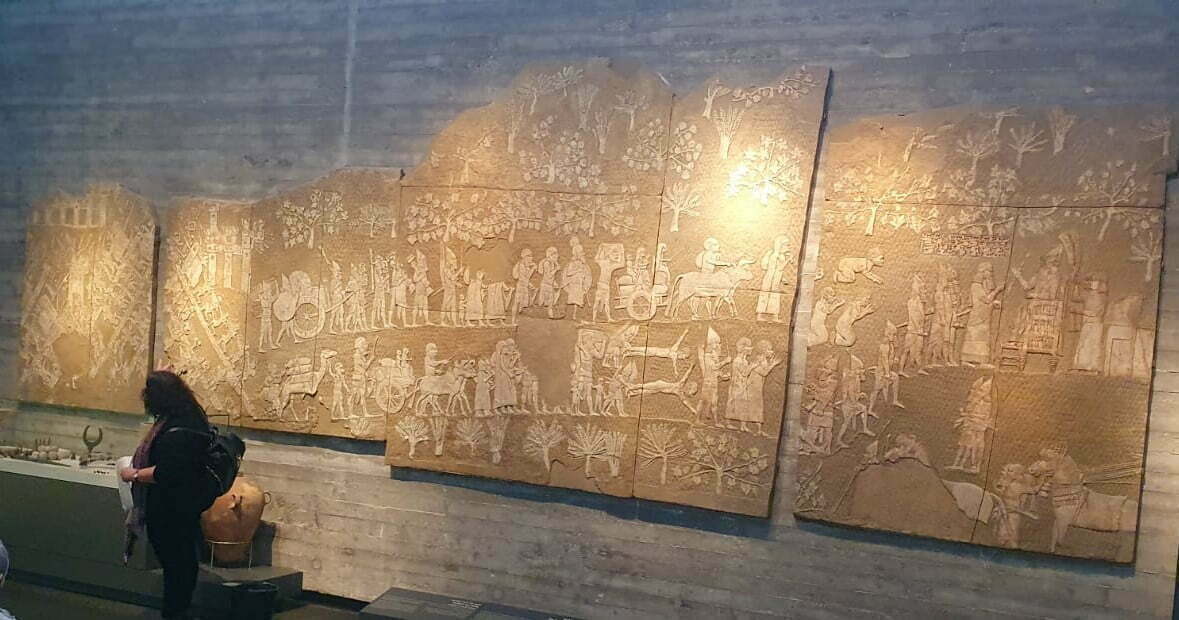

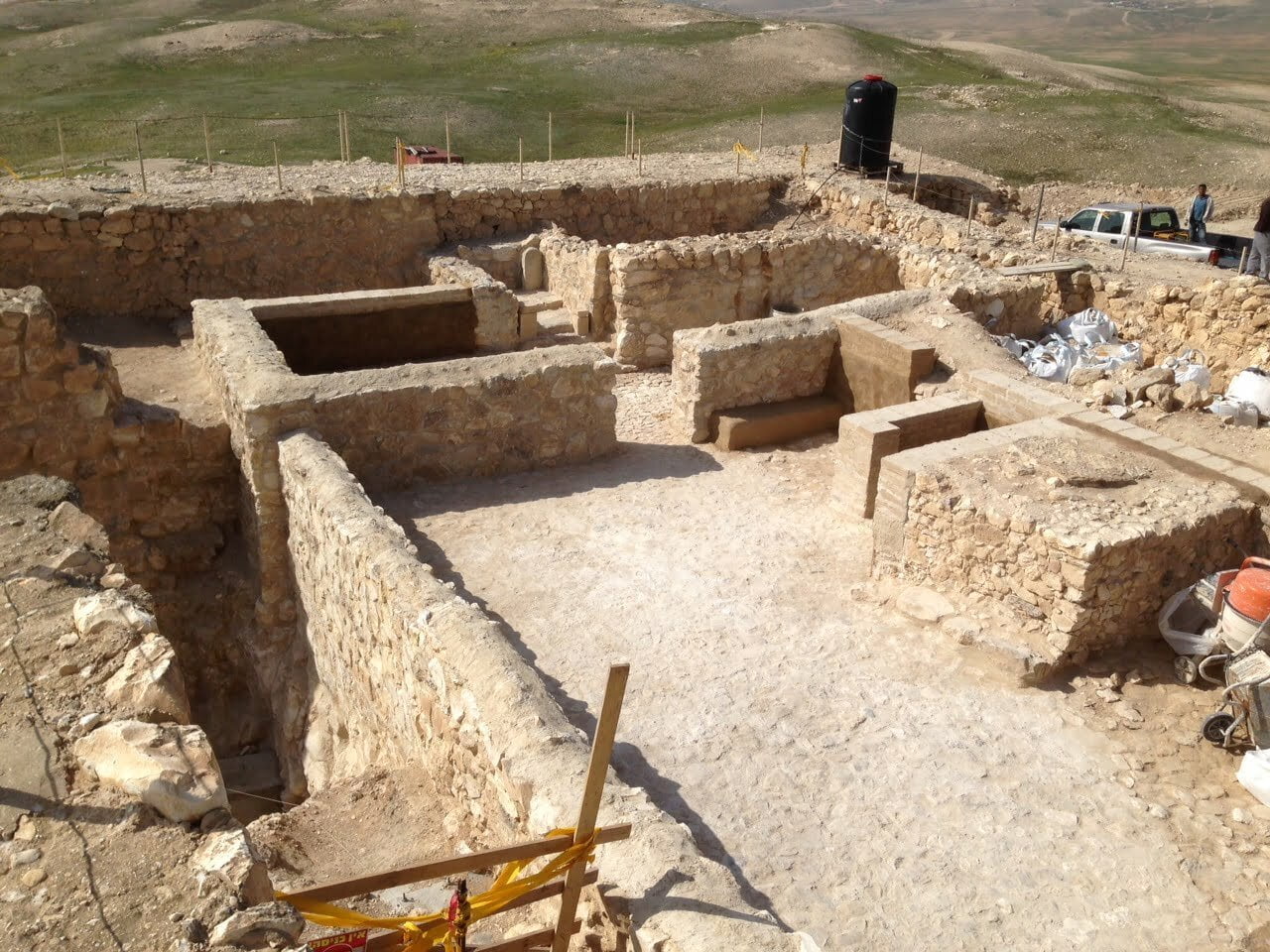

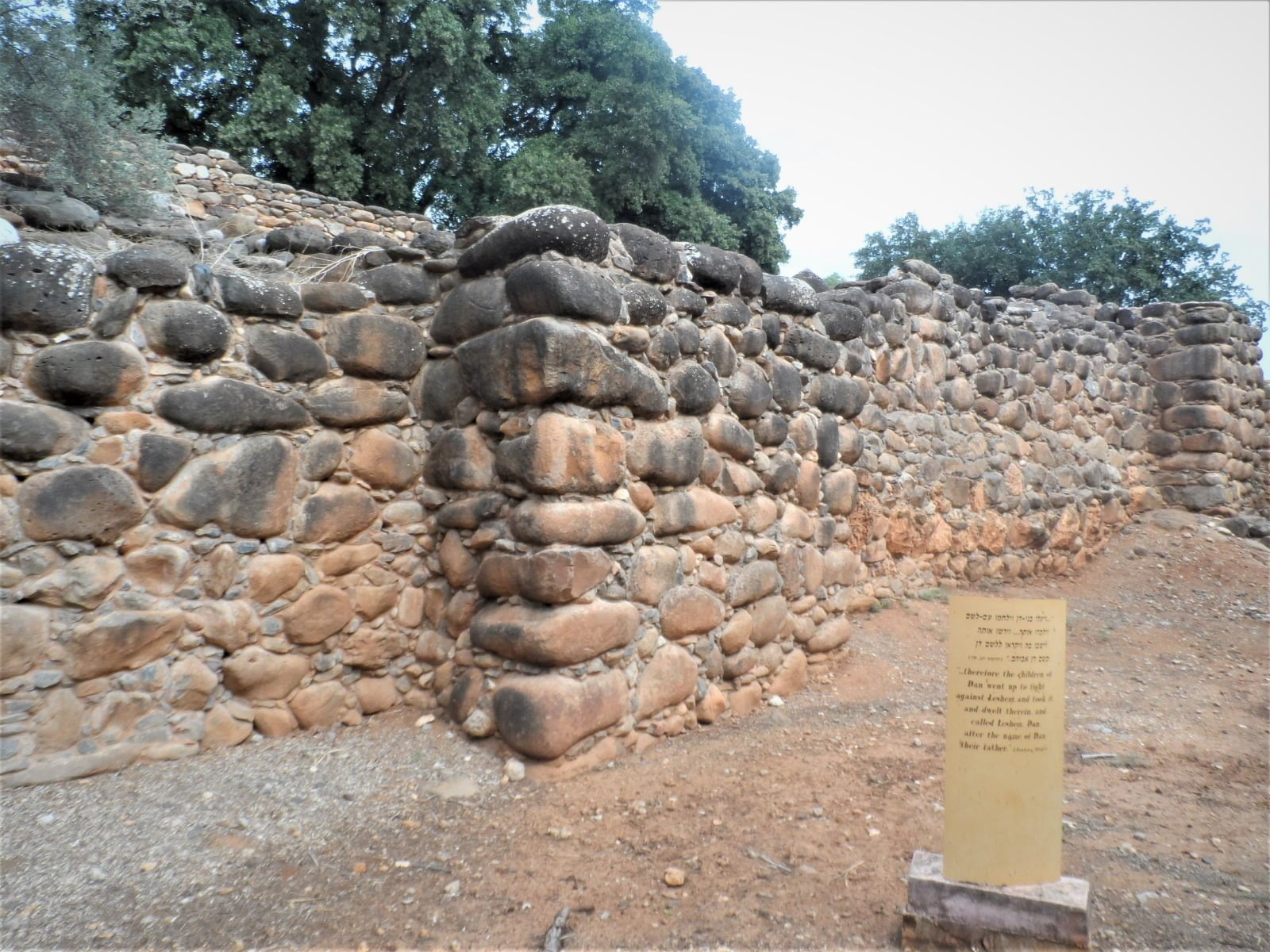

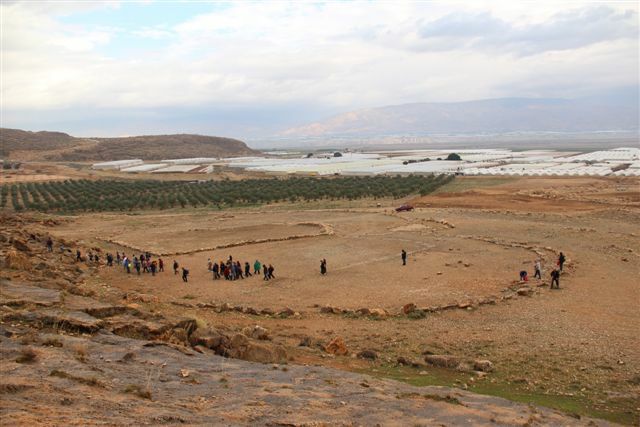

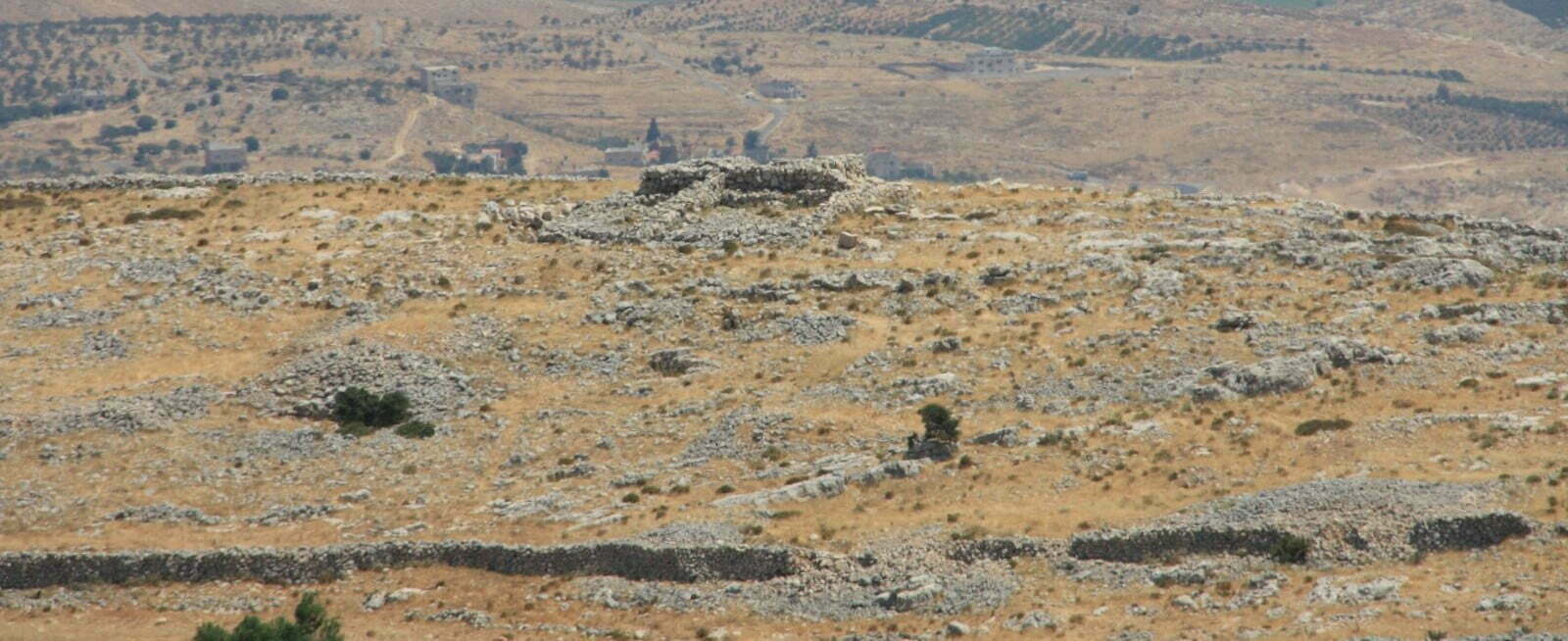

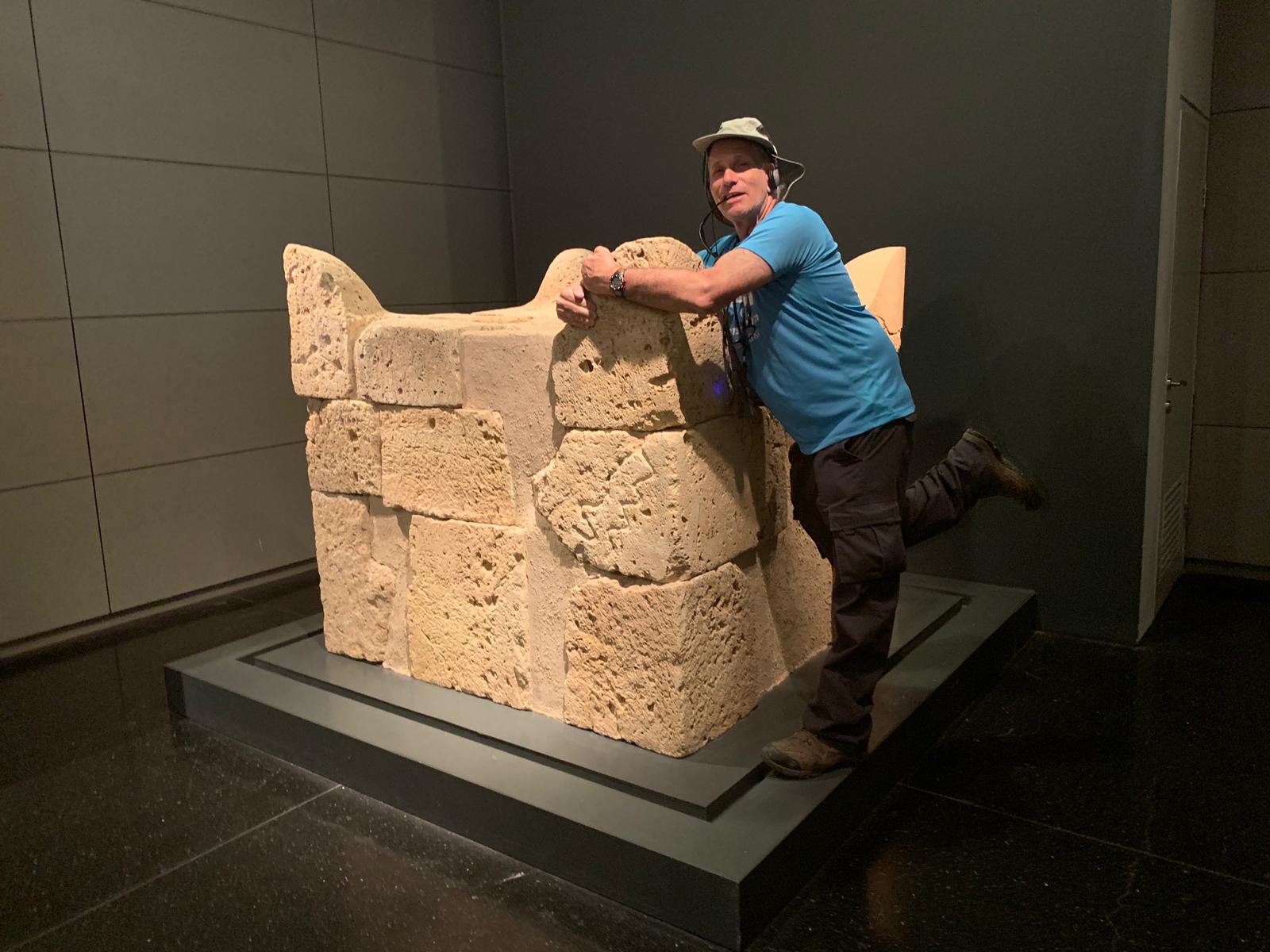

Beersheba altar Restoration in the The Israel Museum – in the The Israel Museum


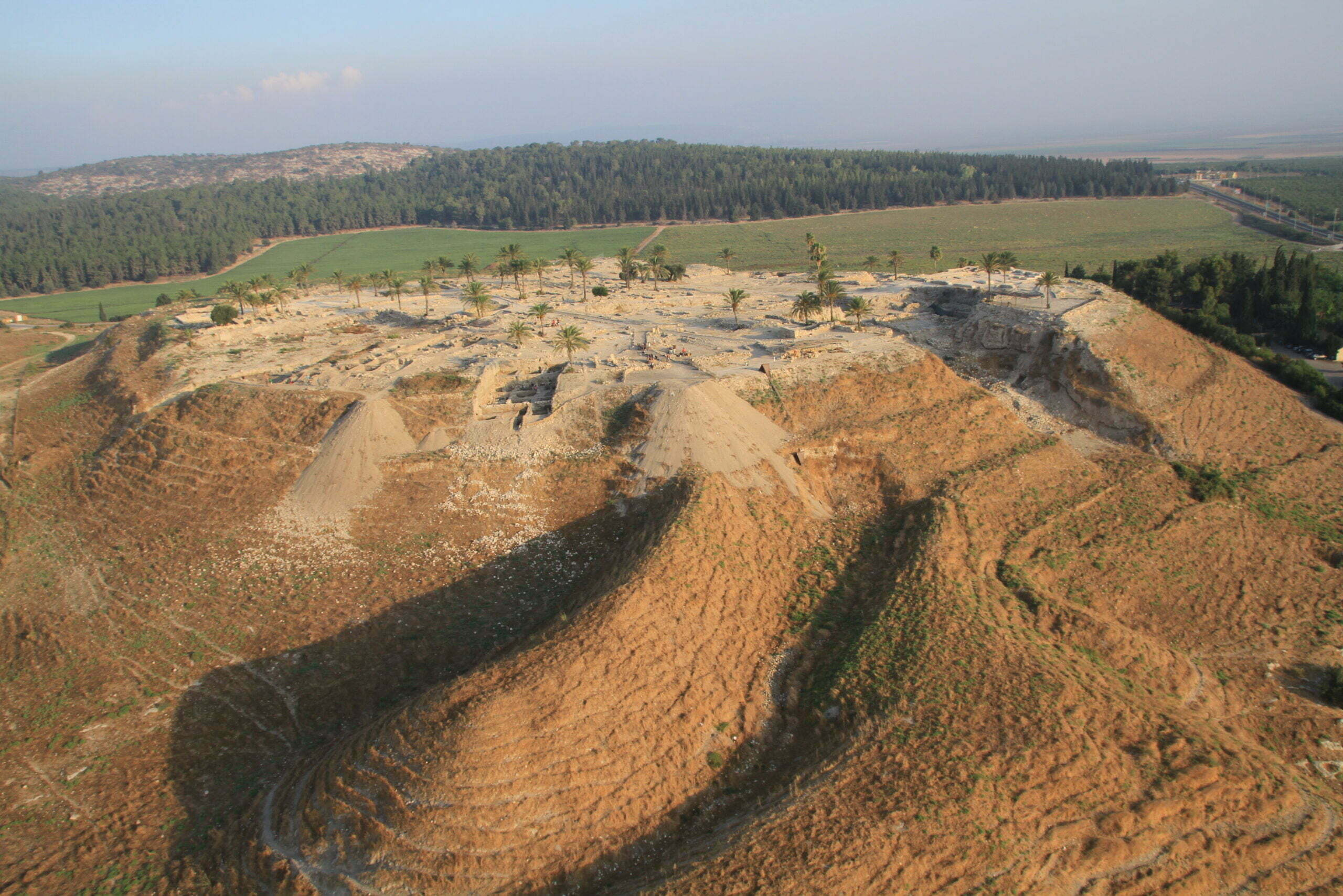

Selected literature in Hebrew
A. Mazar, Iron Age I. Chapter Seven: A. Faust and H. Katz (Eds.) Introduction to the Archeology of Israel, from the End of the Stone Age to the Conquests of Alexander. Lameda, Open University Books, Vol. II, 2019, pp. 111-96.
A. Faust, Iron Age II. Chapter Eight: A. Faust and H. Katz (Eds.) Introduction to the Archeology of Israel, from the End of the Stone Age to the Conquests of Alexander. Lameda, The Open University Books, Vol. II, 2019, pp. 199-321.

